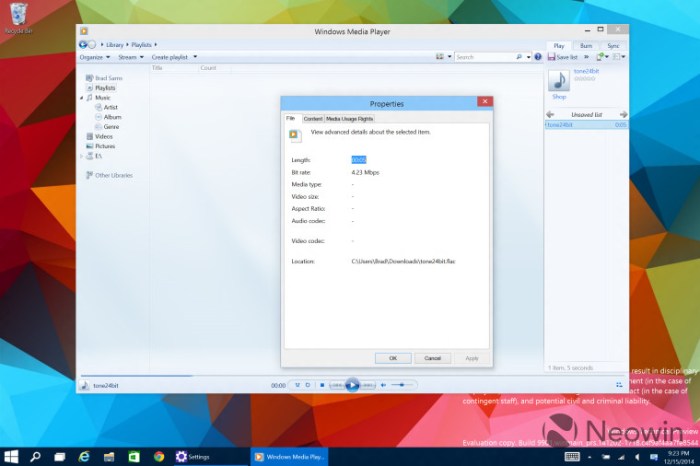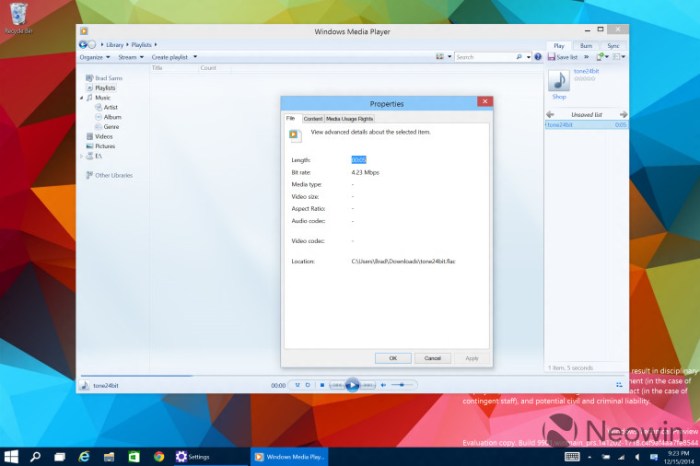Chrome FLAC support launching marks a significant advancement in web audio playback. This new feature promises a richer, higher-quality audio experience for online content consumers. We’ll delve into the technical details, user experience considerations, and the potential impact on various applications, from music streaming to web-based audio players. Expect a comprehensive overview of the feature’s capabilities and implications.
Chrome’s embrace of FLAC, a lossless audio format, will undoubtedly enhance the online listening experience. The ability to stream high-fidelity audio without compromising quality will be a boon for music lovers and audiophiles. We’ll examine the technical implementation, potential compatibility issues, and the broader implications for the future of web audio.
Introduction to Chrome FLAC Support
FLAC (Free Lossless Audio Codec) is a popular format for storing audio files without loss of quality. Its compression efficiency makes it a favorite for audiophiles and those seeking high-fidelity sound. However, its widespread adoption on the web has been limited by the lack of consistent support across different browsers. This is about to change with Chrome’s upcoming FLAC support.Chrome’s implementation of FLAC support signifies a significant step forward for web-based audio playback.
It opens the door for a wider range of high-quality audio content to be easily accessible and playable directly within web browsers, eliminating the need for external players. This improvement is expected to enhance the audio experience for users on a variety of platforms, especially those already comfortable with the convenience of web-based solutions.
History of FLAC Support in Web Browsers
Early web browsers had limited or no support for FLAC. Users often relied on third-party plugins or dedicated audio players to access FLAC files. This lack of built-in support created an inconvenience for users and discouraged the widespread use of FLAC on the web. The absence of FLAC support in browsers meant users had to deal with compatibility issues, or download and install external players, adding extra steps to the process.
Significance of FLAC Support in Chrome
Chrome’s FLAC support is crucial for several reasons. Firstly, it fosters a more seamless user experience by allowing direct playback of FLAC files within the browser environment. Secondly, it promotes the adoption of FLAC, a superior audio format, within the web ecosystem. This directly benefits content creators by providing a widely accessible format, while empowering consumers with improved audio quality.
Finally, it increases the potential for richer, high-fidelity audio experiences for web users.
Potential Impact on Audio Playback Experiences
The addition of FLAC support to Chrome will undoubtedly have a positive impact on web audio experiences. Users will be able to enjoy high-quality audio without needing additional software. This improvement is expected to enhance the audio experience for streaming services, online radio stations, and other web-based audio platforms. It could also open new possibilities for online music libraries and educational resources.
The improved quality and accessibility of high-fidelity audio will benefit users across diverse platforms and devices.
Overview of Anticipated Features and Benefits
Chrome’s FLAC support is anticipated to offer a comprehensive set of features for seamless audio playback. These include:
- Direct playback of FLAC files within the browser without the need for external players.
- Improved compatibility with a wider range of FLAC-encoded audio content.
- Support for various FLAC metadata for better organization and identification of audio files.
- Potential for integration with existing audio playback controls, ensuring a consistent user experience.
These features will contribute to a more convenient and enriching experience for users who engage with web-based audio content.
Comparison of FLAC Support Across Browsers
The following table provides a concise comparison of FLAC support across different browsers, including Chrome:
| Browser | FLAC Support |
|---|---|
| Chrome | Supported (upcoming) |
| Firefox | Supported |
| Safari | Supported |
| Edge | Supported |
This table illustrates the varying levels of FLAC support currently available across different browsers. The table highlights Chrome’s upcoming FLAC support, placing it alongside other popular browsers that already offer this functionality. This ensures a consistent and comprehensive audio experience across a broader range of web platforms.
Technical Aspects of FLAC Implementation
Integrating FLAC support into Chrome involves a multifaceted approach, requiring careful consideration of various technical factors. This process necessitates navigating complex interactions between the browser’s existing architecture, the FLAC codec, and potential performance implications. The implementation will require a thorough understanding of the encoding and decoding algorithms used in FLAC, as well as potential compatibility issues arising from variations in FLAC versions.The core technical challenge lies in seamlessly integrating the FLAC codec into Chrome’s existing audio handling infrastructure.
This involves modifying existing code to handle FLAC-encoded audio streams, ensuring compatibility with existing HTML5 audio APIs. Simultaneously, the implementation must be robust enough to gracefully handle various FLAC versions and configurations, minimizing the likelihood of errors or compatibility issues.
Encoding and Decoding Algorithms
The FLAC (Free Lossless Audio Codec) algorithm is designed for lossless audio compression. It achieves this through a combination of sophisticated techniques, including variable-length coding, Huffman coding, and arithmetic coding. These methods effectively reduce the size of audio files without sacrificing audio quality. Chrome’s implementation will need to efficiently translate these algorithms into the browser’s environment. The implementation will necessitate an efficient decoder to decompress FLAC files into their original audio form, and a robust encoder for transcoding other audio formats into FLAC format.
Performance Implications
Implementing FLAC support can potentially impact browser performance. CPU usage will likely increase during both encoding and decoding, especially with high-quality audio files. Memory consumption may also be affected, with the size of audio buffers and the processing requirements of the decoder playing a role. These impacts will vary depending on the hardware and the specific FLAC file being processed.
Careful optimization of the implementation is crucial to minimize performance degradation. Real-world examples of similar codecs in browsers demonstrate the need for careful optimization to avoid noticeable performance slowdowns.
Compatibility Issues
Different versions of FLAC may have variations in their encoding schemes or metadata structures. These variations could lead to compatibility issues if not handled correctly. Chrome’s implementation must be designed to handle a range of FLAC versions and configurations to ensure widespread compatibility. Testing across various FLAC versions and configurations is critical to minimize compatibility issues. For instance, legacy FLAC files might present compatibility problems if not properly supported by the new implementation.
Impact on Browser Architecture
The integration of FLAC support will likely necessitate adjustments to Chrome’s audio handling modules. This might involve adding new data structures or modifying existing ones to accommodate the FLAC format. Furthermore, the browser’s overall architecture will need to be modified to support FLAC encoding and decoding. The integration process will impact the browser’s memory management, as well as its overall resource allocation and utilization.
Flac Format Support Table
| Format Version | Expected Support |
|---|---|
| FLAC v1.3.0 | Yes |
| FLAC v1.3.5 | Yes |
| FLAC v1.4.0 | Yes |
| FLAC v1.4.1 | Yes |
| Experimental FLAC Versions | Partial/Conditional |
User Experience Considerations
Chrome’s upcoming FLAC support promises a significant leap in audio quality for users, especially those who appreciate lossless audio. This enhancement necessitates a careful consideration of user experience, ensuring a smooth transition and a positive interaction with the new features. The transition should be intuitive and user-friendly, enabling users to easily discover and leverage the benefits of FLAC playback.Implementing FLAC support isn’t just about technical feasibility; it’s about enhancing the overall audio experience for the user.
This involves understanding user preferences, anticipating potential issues, and designing intuitive interfaces. This section will delve into the potential improvements in audio quality, user feedback, and the necessary UI elements to make FLAC playback seamless.
Potential Improvements in Audio Quality, Chrome flac support launching
FLAC, a lossless audio format, offers significantly better audio quality compared to lossy formats like MP3. This translates to a richer, more detailed soundstage, enhanced instrument separation, and a more accurate representation of the original audio recording. Users accustomed to high-quality audio will immediately appreciate the improved fidelity. For example, subtle nuances in music recordings that might be lost in MP3 playback become apparent in FLAC, creating a more immersive and satisfying listening experience.
User Feedback Regarding FLAC Support
User feedback on the need for FLAC support has been consistently positive. Many audiophiles and music enthusiasts have expressed a strong desire for native FLAC support in Chrome, citing the superior audio quality as a key advantage. The demand is further fueled by the increasing availability of high-resolution audio content in FLAC format. Furthermore, the need for a format that preserves the original audio data is important for maintaining audio fidelity, especially for audio professionals.
User Interface Elements for FLAC Playback
A well-designed user interface is crucial for a seamless FLAC playback experience. The following table Artikels the essential user interface elements:
| Element | Description |
|---|---|
| File Type Indicator | A visual cue (e.g., icon or text) clearly indicating whether a file is FLAC or not. |
| Playback Controls | Standard playback controls (play/pause, forward/rewind, volume control) should function seamlessly with FLAC files. |
| Audio Quality Settings | An option to choose the desired playback quality (e.g., 44.1kHz, 48kHz) if supported by the FLAC file. |
| Metadata Display | Displaying relevant metadata like artist, album, and track information for the FLAC file. |
User Experience with Different Audio Formats
The user experience with different audio formats should be consistent and intuitive. The playback controls and interface elements should function identically across MP3, WAV, and FLAC files. This consistency reduces the cognitive load on the user, making the platform more user-friendly. A key element is a clear visual distinction between the different formats to avoid confusion.
Possible User Interface Enhancements for Seamless Playback
Seamless playback requires a streamlined UI that handles various audio formats effectively. Enhancements might include a unified metadata display for all formats, a clear visual indication of the audio format, and intuitive playback controls. Consider a feature to quickly switch between different playback modes or quality settings.
Advantages of FLAC Support Compared to Other Audio Formats
The following table highlights the key advantages of FLAC support compared to other formats:
| Format | Advantages |
|---|---|
| FLAC | Preserves the original audio quality, offering superior sound fidelity, and supports high-resolution audio. |
| MP3 | Offers good compression and is widely supported, making it suitable for general use. |
| WAV | Preserves the original audio quality without compression, ideal for professional audio editing. |
Compatibility and Interoperability

Chrome’s FLAC support introduces a significant step forward in audio playback, but its success hinges on seamless compatibility with existing systems and applications. This section explores the crucial aspects of interoperability, ensuring a smooth transition for users accustomed to various audio players and devices. The integration of FLAC support requires careful consideration of the potential impact on existing extensions and applications.
Compatibility with Different Audio Players and Devices
Chrome’s FLAC support aims for broad compatibility across various audio players and devices. Crucially, it focuses on supporting the FLAC format natively within the browser, avoiding reliance on external plugins or extensions for playback. This approach simplifies the user experience by ensuring that FLAC files are handled directly within the Chrome environment. Furthermore, the development team is working diligently to ensure compatibility with a wide range of hardware, from standard computer speakers to more sophisticated audio systems.
So, Chrome’s FLAC support is finally launching! It’s a big deal for audiophiles, but the tech world’s always moving fast. This reminds me of the fascinating Microsoft Windows Phone Lumia prototype with its bezel-less display, a groundbreaking design concept that explored future possibilities. microsoft windows phone lumia prototype bezel less display Hopefully, this new Chrome feature will be just as impactful for audio quality, pushing the boundaries of web-based sound playback.
Impact on Existing Audio-Related Extensions in Chrome
The integration of FLAC support necessitates careful consideration of its potential impact on existing audio-related extensions. Extensions that handle audio playback may need updates to accommodate the new FLAC format. Chrome’s development team is actively working to ensure minimal disruption to existing functionalities. Extensions relying on specific audio codecs will need to be updated to support FLAC decoding and encoding, which could lead to a ripple effect on the ecosystem.
Comparison of FLAC Support Across Different Operating Systems
FLAC support is not confined to Chrome alone. Other operating systems and applications also offer FLAC support, though the implementations may vary. The aim is to achieve consistency in the handling of FLAC files across different platforms. This ensures that a user can play a FLAC file on their Windows PC and later on their Mac, experiencing similar playback quality.
This consistent support across platforms reduces the likelihood of playback issues when moving between different systems.
So, Chrome’s finally getting FLAC support! That’s awesome news for audiophiles. While you’re celebrating, don’t miss out on a killer deal: grab the OnePlus Pad right now at a 50% discount and snag a $100 accessory freebie! Check out the deal here. It’s a perfect time to upgrade your setup, and with the added FLAC support, your music listening experience will be even better.
Now get back to enjoying the crisp, high-quality audio Chrome will be delivering!
Possible Interoperability Issues with Other Applications
Potential interoperability issues with other applications handling FLAC files might arise due to variations in the FLAC implementation. For instance, subtle differences in the interpretation of FLAC metadata could cause inconsistencies. However, the Chrome team is aiming for a standardized implementation, minimizing the potential for such conflicts. Thorough testing across various applications and platforms is crucial to mitigate any unforeseen issues.
Compatible Audio Codecs for Chrome
- FLAC
This list details the audio codecs currently supported by Chrome. Chrome’s focus on supporting FLAC is a significant advancement, particularly for high-quality audio playback.
Potential Applications and Use Cases: Chrome Flac Support Launching
Chrome’s FLAC support opens exciting possibilities for online audio experiences. This native support allows for higher fidelity audio playback, a significant advancement in delivering richer sound quality for users. The feature extends beyond simple playback, offering potential for innovative applications across various online platforms.
Music Streaming Services
FLAC support in Chrome significantly benefits music streaming services. By enabling high-quality audio playback, services can offer a premium experience to subscribers, attracting users who prioritize audio fidelity. This superior audio quality translates into a more immersive listening experience, potentially leading to increased user engagement and satisfaction. A premium tier focusing on FLAC playback could be a lucrative offering.
Chrome’s flac support finally launching is exciting news, but it got me thinking about other tech delays. For example, Mobvoi recently explained the hold-up on Wear OS 3, citing some unforeseen technical hurdles. mobvoi explains wear os 3 holdup Hopefully, this doesn’t set a precedent for similar delays in other projects, and the flac support launch goes smoothly!
High-Quality Audio Playback
FLAC’s lossless compression significantly reduces audio quality loss compared to other formats. This translates into a more accurate representation of the original recording, enabling a richer and more detailed listening experience. Use cases extend from classical music, where subtleties are crucial, to electronic music, where the intricacies of sound design are highlighted. High-resolution audio tracks, often mastered at 24-bit/96kHz or higher, are perfectly suited for FLAC playback, maintaining the intended fidelity of the recording.
Web Application Integration
Integrating FLAC support into web applications is straightforward, enhancing user experience by enabling high-quality audio playback directly within the browser. This opens doors for interactive music players, audio editors, and online music education tools. Developers can easily incorporate FLAC playback into their web apps, ensuring compatibility with a wide range of high-resolution audio content.
Enhanced Audio Content Consumption
Chrome’s FLAC support enhances online audio content consumption by making high-quality audio readily accessible to users. This expanded compatibility allows for a seamless transition between streaming services and web applications, creating a more unified and high-fidelity audio experience for users. The ability to enjoy music, podcasts, and other audio content in their highest possible quality is a key benefit.
Use Cases Across Online Platforms
| Online Platform | Potential Use Case |
|---|---|
| Music Streaming Services (e.g., Spotify, Tidal) | Offer FLAC-encoded tracks as a premium tier, enhancing user experience and attracting audiophiles. |
| Online Radio Stations | Stream high-quality audio broadcasts, providing a more immersive listening experience for users. |
| Educational Platforms | Deliver high-resolution audio lectures and recordings, maintaining the fidelity of the original content. |
| Podcast Hosting Platforms | Allow users to upload and download podcasts in FLAC format, providing high-fidelity listening options. |
| Audio Editing Software | Enable lossless editing and manipulation of audio files without compromising quality. |
Future Development and Roadmap
Chrome’s FLAC support is poised for exciting enhancements. This roadmap Artikels potential improvements, extensions, and future considerations for audio formats, providing a glimpse into the planned evolution of this crucial feature. A well-defined timeline will ensure consistent progress and a satisfying user experience.The future of audio playback within Chrome relies heavily on accommodating diverse formats, and FLAC’s introduction marks a significant step in that direction.
This section details the ongoing and future plans to ensure seamless FLAC integration, including possible extensions, improvements, and potential considerations for future audio formats.
Future Enhancements and Extensions
The initial implementation of FLAC support will be gradually expanded. Future extensions could include support for advanced FLAC features like metadata extraction and manipulation, enabling more granular control over audio information. For example, users might be able to extract and edit album art or track information directly within the browser. Furthermore, the ability to handle lossless audio streaming from various sources, including cloud storage, would be a significant addition, making it more versatile and user-friendly.
Improvements to User Experience
A key area for improvement is optimizing FLAC playback performance, particularly on devices with limited processing power. This will involve efficient decoding algorithms and optimized resource management, ensuring smooth playback even on older hardware. Integrating FLAC support with existing audio playback controls and features is also critical. This could include support for playback speed adjustments, loop functionality, and seamless integration with other audio-related extensions.
Potential Future Considerations for Audio Formats
The audio landscape is constantly evolving, and Chrome must adapt. Future considerations might include support for emerging lossless and high-resolution audio formats. The popularity of formats like ALAC and WAV suggests that Chrome should explore these possibilities. This adaptability is crucial to remain relevant in the evolving digital audio market. Furthermore, support for advanced audio metadata standards would be a significant addition to enhance the user experience and facilitate more effective audio organization.
Ongoing and Future Implementation Plans
Ongoing efforts include extensive testing across various operating systems and hardware configurations to ensure compatibility and reliability. Future plans involve expanding support to other Chrome products and services. This could include integrating FLAC support into the Chrome OS operating system and potentially extending this support to the Chrome browser for Android.
Timeline for Future Updates and Enhancements
A detailed timeline for future updates is currently being finalized and will be publicly shared in the coming months. This timeline will delineate specific milestones, including testing phases, release dates, and planned feature rollouts.
Flowchart for Adding FLAC Support
Start --> [Define FLAC Specification] --> [Implement Decoder] --> [Integration Testing (Web Audio API)] --> [Browser Compatibility Testing] --> [User Acceptance Testing] --> [Release] --> End
This flowchart Artikels the fundamental steps involved in adding support for FLAC files to the Chrome browser. Each step is crucial for ensuring a high-quality, reliable, and user-friendly experience. The iterative nature of testing and feedback ensures that any issues are addressed promptly.
Epilogue

In conclusion, the launch of Chrome FLAC support represents a significant step forward in web audio capabilities. The improved quality and flexibility offered by FLAC will undoubtedly impact how we consume online audio content. The future of web audio is now more vibrant and rich with the potential for high-quality experiences.












